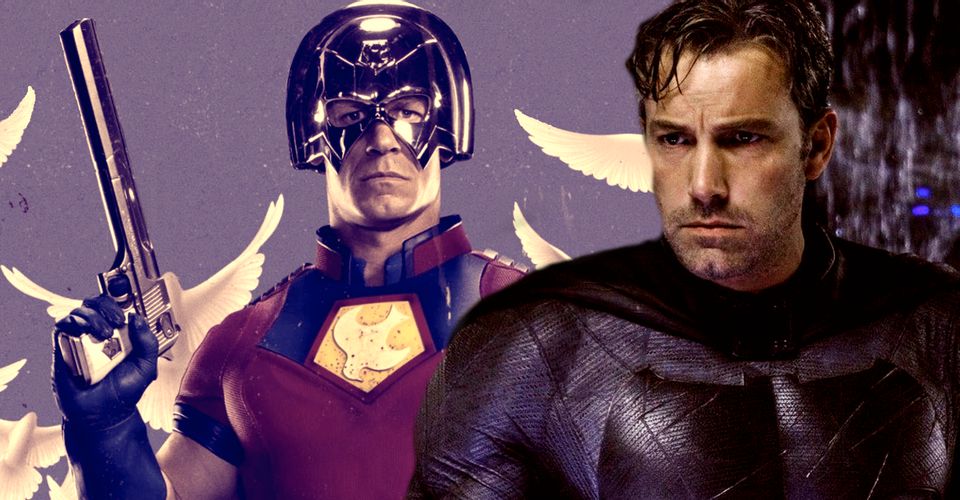Peacemaker Made Batman Breaking His DCEU No Kill Rule In BvS Better

Warning: Contains SPOILERS for Peacemaker episode 4
Batman broke his no-kill rule in Batman v Superman: Dawn of Justice, but Peacemaker episode 4 confirms that he’s restored his famous principle in the DCEU. While Batman has a history of killing criminals in the comics and other film adaptations, his body count in Dawn of Justice was a source of controversy among viewers. By the end of the film, however, he’s implied to have returned to his old ways of defeating his enemies non-lethally, and Peacemaker confirms this.
In Batman’s earliest comic appearances, he didn’t explicitly have a rule against killing but tried to avoid it whenever possible. The rule was implemented over time to both strengthen Batman’s moral code and allow memorable supervillains to appear in multiple stories. In most film adaptations, Batman’s refusal to use lethal force is often emphasized, with one of the few exceptions being the Tim Burton version. Michael Keaton’s Batman uses lethal force against criminals many times and the film doesn’t provide a clear explanation why.
In Peacemaker episode 4, “The Choad Less Traveled,” Peacemaker returns to his father’s home, but has a brief and antagonistic conversation with his elderly neighbor. The neighbor accuses Peacemaker of not being a true superhero, referencing Batman, his rogues’ gallery, and his rule of not killing. While Dawn of Justice implied at the end that Batman will no longer use lethal force, Peacemaker confirms this, solidifying Batman’s Dawn of Justice character arc.

Batman underwent a significant character arc in the DCEU, which began with his adopted son, Dick Grayson, being murdered by The Joker and his newfound existential dread during Superman’s battle with General Zod in Metropolis. Still mourning Robin and not trusting Superman, Batman gradually turned to villainous actions, killing many of Lex Luthor’s henchmen in Dawn of Justice and being prepared to kill Superman, compromising his principles for what he believed to be saving Earth. After realizing both the altruism of Superman and how close he came to becoming the same as the criminals he fights, Batman returned to his heroic ways.
Batman never got a chance to put this to the test, however, as his following appearances showed him fighting Darkseid’s Parademons, where he once against used lethal force in battle. This doesn’t reverse his character arc, however, as Parademons are only alive in a biological sense. The creatures lack free will or any real sentience, making them essentially organic automatons. Had the DCEU Batman solo film been made, the Dark Knight would have likely returned to his old ways of non-lethally defeating his enemies. The fact that Peacemaker all but confirms this previously theoretical arc highlights not only the emotional turmoil of the character in Dawn of Justice, but also just how far Batman has come since.
Spinoff material for Dawn of Justice, such as prequel comics, confirm that Batman’s brutality only began after Superman and Zod’s battle, strongly implying that the henchmen that he killed in the 2016 movie were the only instances of him using lethal force. The fact that Batman’s villains, like the Joker, Riddler, and Mad Hatter, are still alive and his no-kill rule is famous among ordinary citizens outside of Gotham reinforces his Dawn of Justice arc. By outright stating that Batman has a rule against killing, Peacemaker confirms that the Dark Knight ultimately abandoned his brutal methods shown in Dawn of Justice. Although the aside may seem minor, it actually adds greater depth to Batman’s character across the DCEU as a whole.
Episodes of Peacemaker air Thursdays on HBO Max
- The Batman (2022)Release date: Mar 04, 2022
- DC League of Super-Pets (2022)Release date: Jul 29, 2022
- Black Adam (2022)Release date: Oct 21, 2022
- The Flash (2023)Release date: Jun 23, 2023
- Aquaman and the Lost Kingdom (2023)Release date: Mar 17, 2023
- Shazam! Fury of the Gods (2022)Release date: Dec 16, 2022
- Blue Beetle (2023)Release date: Aug 18, 2023
About The Author


















